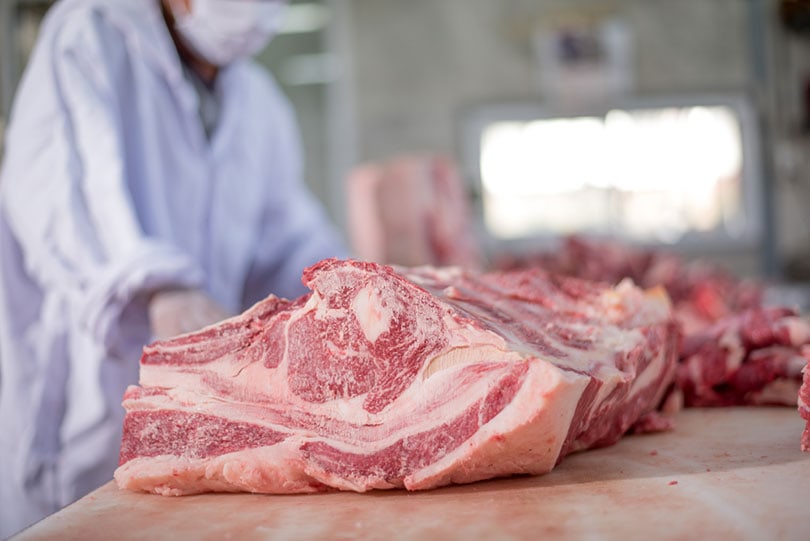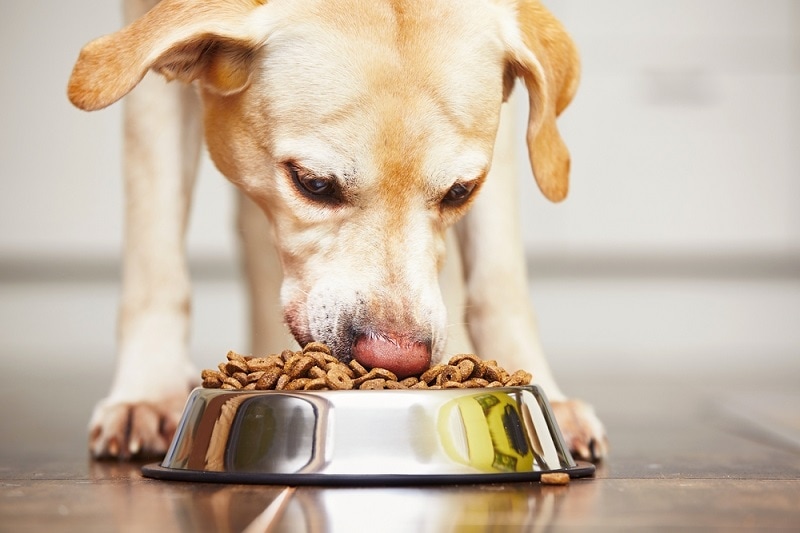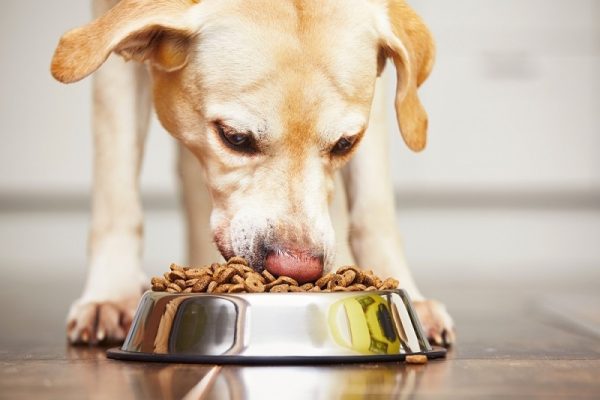There are tons of misconceptions about meat meal out there. Because meat meal isn’t whole meat, many dog owners assume it’s a derivative of meat, similar to by-products. However, this isn’t exactly true. Quality meat meal can actually be a great ingredient in most dog foods because it is a concentrated form of meat that has gone through a rendering process.
Let’s take a look at how this product is made to better understand why it is usually a great ingredient to look out for.
How Is Meat Meal Made?
This ingredient is made solely from meat. Typically, the type of meat is named. For instance, you’ll see “chicken meal” or “beef meal”. Therefore, you know exactly where the ingredient is coming from.
To make meat meal, dog food companies cook down whole meat until much of the moisture content is removed. This process is called rendering and is similar to making stew. In the end, you get a powder-like, very concentrated meat. For this reason, by weight, meat meal contains far more protein than whole meat, which contains lots of water.
Because ingredient lists are ordered in terms of weight, having a meat meal as the first ingredient means that your dog is getting far more protein and nutrients than if whole meat was the first ingredient. However, a meat meal costs more than whole meat. It takes many ounces of chicken to make one ounce of chicken meal.
In the end, meat meal contains about four times more protein and nutrients than the whole meat it was made from. With that said, not all meat meal is made equal. Some meat meal can be extremely good for dogs, while others should be avoided.

- Related Read: Is It Cheaper to Make Your Own Dog Food?
Quality Meat Meal vs Mystery Meat
A meat meal can only be as good as the ingredients it was made from. If by-products and low-quality meats were utilized to make the meat meal, then the final product wouldn’t be great.
Often, meat meals that are high-quality contain their source in their name. Because chicken and beef are quality meats, the resulting meat meal will be high-quality, too. Knowing exactly where the meat comes from helps you avoid any allergies your pet might have.
It is possible to see unnamed meat meals on ingredient lists, as well. “Meat meal” isn’t terribly high-quality in most cases since the source isn’t listed. If a source isn’t listed, it either changes regularly (depending on the cheapest option, normally) or the company doesn’t want you to know the source. Therefore, we recommend against meat meals that don’t have the source listed.
- Unspecified meat meals
- Meat meals made with low-quality ingredients
On an ingredient list, prioritize quality, specifically-named meat meals like “lamb meal”, “chicken meal”, “beef meal”, “fish meal” and generally avoid diets that do not specify the protein source such as “meat meal”, “animal meal”, and “poultry meal”.
- See Also: What Is Choline Chloride in Dog Food?
Why Is Meat Meal Used?
There are several reasons why meat meal is used instead of whole meat. In dry dog foods, the moisture content must remain low. Otherwise, the food will cease to be shelf-stable, which can lead to all sorts of problems. Rendering provides a process to remove as much moisture as possible from meat before it’s added to the food.
Furthermore, meat meal is easier to transport and store. It doesn’t require refrigeration, as the low moisture content prevents the growth of bacteria. It also weighs much less but contains more protein, and companies can use less in each batch of food.
To make dry dog food, the meat must be dehydrated. Otherwise, the formula will contain way too much water. Even if an ingredient list contains whole meat as an ingredient, that meat had to be dehydrated before being added to the dry dog food.
However, whether whole meat or meat meal is listed depends entirely on when the company weighs the food item. If they weigh the chicken before it is processed, then whole meat will be listed (despite the fact that the chicken was then rendered or processed in another fashion). If they weigh the meat after it is processed, meat meal will be listed.

Companies can use this to their advantage if they’re trying to increase the perception of the meat content in their food. Whole chicken weighs much more than meat meal. Since ingredient lists are organized by weight, the company can use the water weight to make the chicken appear near the top of the list.
On the other hand, much more chicken meal must be used to make it appear as the first ingredient. Because there is no moisture content to bulk up the weight, the company must use more meat meal to increase its standing on the ingredient list.
Therefore, a formula that includes “chicken meal” as the first ingredient contains more meat than a formula with “chicken” as the first ingredient. Many meat meals, including chicken meal, have a very similar digestibility to their source protein. Despite what many websites may claim, digestibility does not suffer in the rendering process.
Conclusion
Meat meal may look like a controversial ingredient, but most experts agree that it is a great option for most dog foods. Simply put, meat meal is a concentrated version of meat. Therefore, it includes far more protein than whole meat per ounce.
Featured Image Credit: Jaromir Chalabala, Shutterstock











